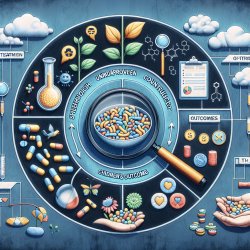Introduction
In the realm of speech-language pathology, the integration of advanced computational models can significantly enhance the therapeutic outcomes for children. The research article titled "Markov Dynamic Models for Long-Timescale Protein Motion" by Chiang, Hsu, and Latombe offers insights that can be extrapolated to improve our understanding of complex biological processes, including language development and disorders.
Understanding Markov Dynamic Models (MDMs)
Markov Dynamic Models (MDMs) are powerful tools that can model the stochastic nature of complex systems. Originally applied to protein dynamics, these models can be adapted to understand the progression of speech and language development in children. By representing states as probabilistic distributions over possible outcomes, MDMs allow us to capture the inherent variability in developmental trajectories.
Application in Speech-Language Pathology
For speech-language pathologists, understanding the dynamic nature of language acquisition is crucial. MDMs can provide a framework for predicting developmental outcomes based on observed behaviors. By modeling language acquisition as a series of probabilistic transitions between developmental milestones, practitioners can better anticipate and address potential delays.
Benefits of a Data-Driven Approach
Utilizing MDMs in speech-language pathology aligns with a data-driven approach, allowing practitioners to:
- Predict Developmental Trajectories: MDMs can help forecast the progression of language skills, enabling early intervention strategies.
- Identify Key Transition Points: Understanding critical transitions in language development can guide targeted interventions.
- Customize Therapy Plans: Data-driven insights allow for personalized therapy plans that cater to the unique needs of each child.
Encouraging Further Research
While the application of MDMs in speech-language pathology is promising, further research is necessary to refine these models for clinical use. Practitioners are encouraged to collaborate with computational scientists to develop tailored models that reflect the complexities of language acquisition.
Conclusion
The integration of Markov Dynamic Models into speech-language pathology represents a significant step towards more effective, data-driven therapeutic practices. By leveraging these models, practitioners can enhance their ability to predict and influence language development outcomes, ultimately leading to better support for children with speech and language disorders.
To read the original research paper, please follow this link: Markov dynamic models for long-timescale protein motion.










